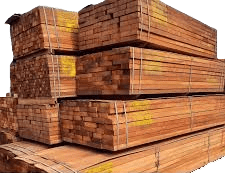Tali Wood
Tali Wood
Introduction
Tali wood is a remarkable material that offers numerous benefits. From its environmental sustainability and durability to its versatility and aesthetic appeal, tali wood has become a popular choice for various applications. In this article, we will delve into the various aspects of tali wood and explore why it is an excellent option for sustainable and durable construction.
Overview of Tali Wood
Tali wood, also known as Erythrophleum suaveolens, is a hardwood species native to tropical regions, particularly found in West and Central Africa. It is renowned for its impressive strength and density, making it highly resilient against wear and tear. Due to its beautiful reddish-brown color and attractive grain patterns, tali wood is often sought after for its natural elegance.
Environmental Sustainability
One of the primary advantages of tali wood is its environmentally sustainable nature. The harvesting of tali wood is carefully managed to ensure responsible sourcing. By adhering to strict certification standards and regulations, the industry ensures the preservation of forests and promotes reforestation efforts. Choosing tali wood for construction projects is an environmentally conscious decision that contributes to the overall sustainability of our planet.
Durability and Longevity
Tali wood’s exceptional durability makes it a sought-after material for various applications. Its resistance to rot, decay, and insect infestation ensures that structures built using tali wood can withstand the test of time. Additionally, tali wood has an inherent resilience to harsh weather conditions, making it suitable for both indoor and outdoor use. By choosing tali wood, individuals can benefit from long-lasting structures that require minimal maintenance.
Versatility and Aesthetic Appeal
Tali wood offers incredible versatility in terms of design possibilities. Its consistent texture and stunning color variations make it a favorite choice among architects and interior designers. Whether used for flooring, decking, furniture, or cabinetry, tali wood adds a touch of elegance and sophistication to any space. The natural beauty and unique characteristics of tali wood make it an ideal choice for those seeking a distinctive and visually appealing material.
Applications of Tali Wood
The applications of tali wood are vast and diverse. Its strength and durability make it particularly suitable for heavy construction projects such as bridges, railway sleepers, and power line poles. Tali wood is also commonly used in the production of high-quality furniture, flooring, and decking due to its resistance to scratches and dents. Furthermore, its dimensional stability makes it an excellent choice for exterior siding and cladding. Tali wood’s versatility ensures its usability in various industries and applications.
Maintenance and Care
One of the advantages of tali wood is its low maintenance requirements. Regular cleaning with a mild detergent and water is usually sufficient to keep tali wood looking pristine. Additionally, applying a protective finish can further enhance its longevity. Although tali wood naturally weathers over time, many individuals appreciate the rich patina that develops, adding character and charm to the wood.
Conclusion
Tali wood undoubtedly offers numerous benefits as a sustainable and durable material. Its environmental sustainability, combined with its exceptional strength and beauty, make it a desirable choice for construction projects. Whether used for outdoor structures or indoor applications, tali wood’s versatility and longevity ensure that it will continue to be a popular wood species in the years to come. By choosing tali wood, individuals can contribute to sustainable practices and create stunning spaces that stand the test of time.
SHIPPING DOCUMENTS
Bill of Lading
Certificate of Origin
SGS Inspection Certificate
Phytosanitary Certificate
Fumigation Certificate
Commercial Invoice
Packing List
To Contact:
: +234(80)66579079
[email protected]
cc: [email protected]


TRADE PROCESS
Cost Insurance and Freight (CIF):The seller handles everything from loading the vessel, paying for insurance, and shipping the product to the country the buyer wants it delivered.
Freight On Board (FOB):The seller is responsible for handling the transportation of the goods to the port of shipment and loading cost. Once the goods are loaded on the ship, all liabilities transferred to the buyer. Liabilities like unloading, insurance, marine freight transport and transporting products to its destination.
We Are Ready To Handle Your Request
Enter your details and we will get in touch to discuss your project






